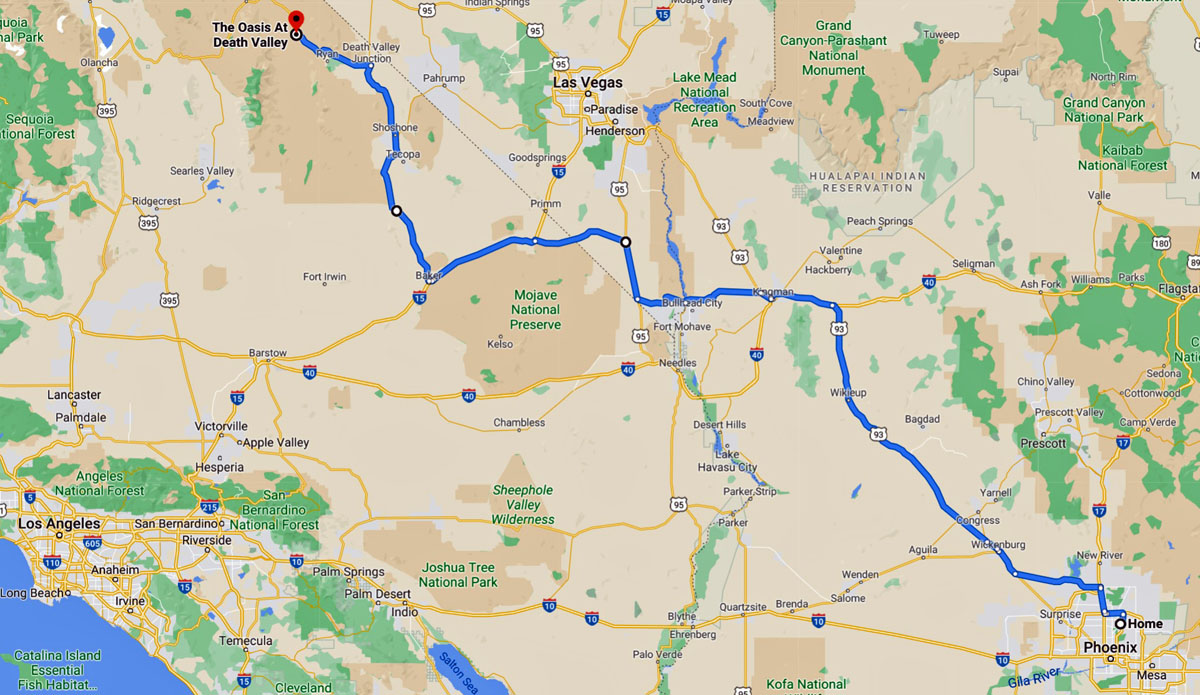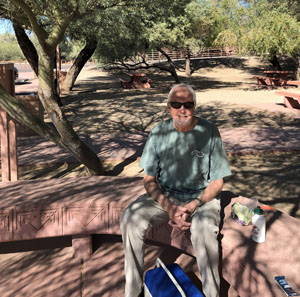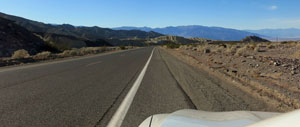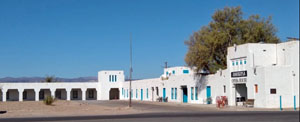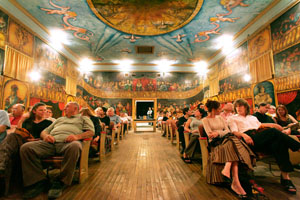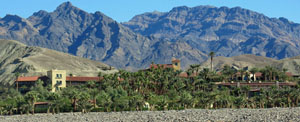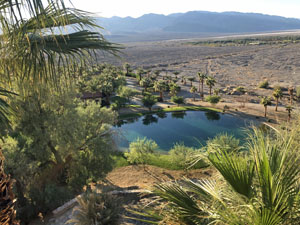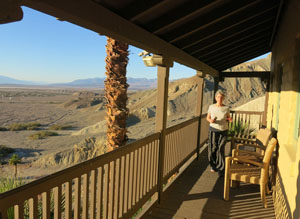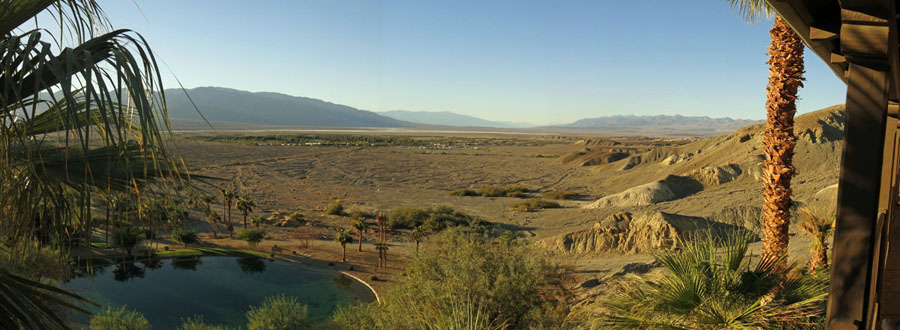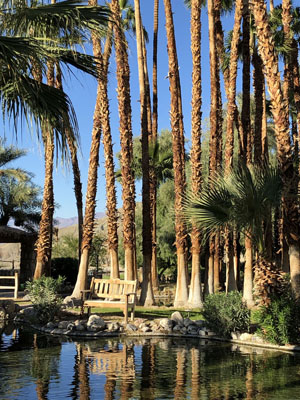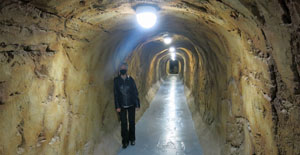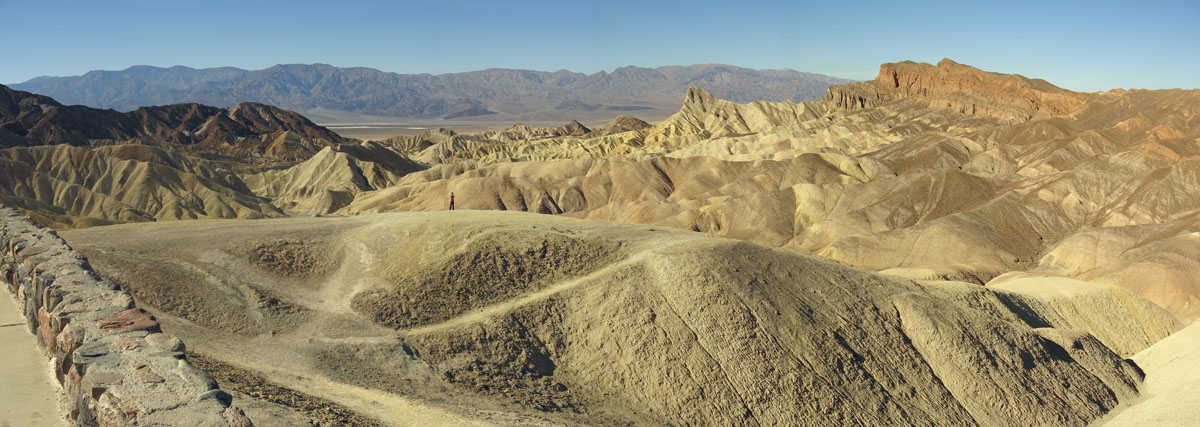
Now is the dawning of the Age of Covid.
Large segments of the population have lost their livelihoods
or their lives due to Covid-19. Over 6,400 Arizonans are
dead, many due to a failure of government at all levels. We
are relatively lucky so far but have been in semi-isolation
since March, unable to eat indoors anywhere, or visit
friends and family. The summer of 2020 was the most brutally
hot on record so we were mostly confined at home.
Occasionally I could venture out on my bike at 5 or 6 a.m.
when the thermometer showed 90F or less. Meanwhile, the
hottest temperature ever recorded on Earth was noted at
Death Valley, California (130F/54.4C but may be 128F after
calibration and ratification by NOAA).
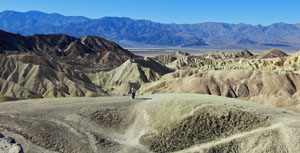
Barb at Zabriskie Point 2020
|
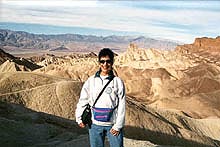
Barb at Zabriskie Point 1999
|
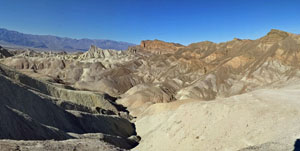
Entering the Badlands
|
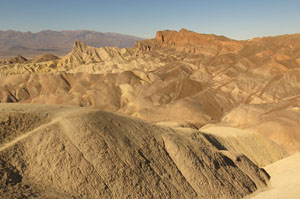
Badlands Sculpture
|
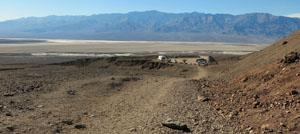
Hanging Bridge Trail
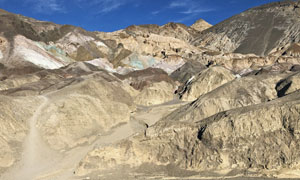
Artists Palette. Photo by Barb.
|
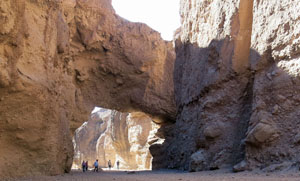
Hanging Bridge
CLICK on any IMAGE to ENLARGE
|
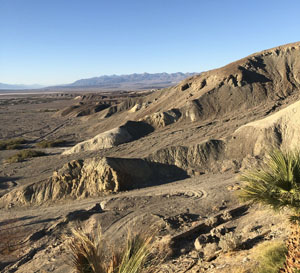
Textbook Talus Slopes along the Range
Photo by Barb
|
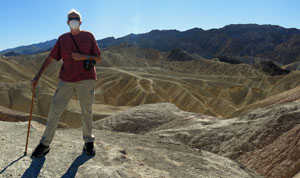
Covid Man
Photo by Barb
|
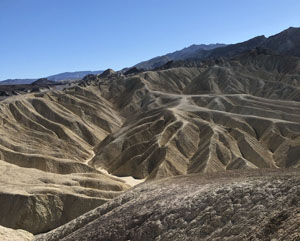
Geologic Turbulence
|
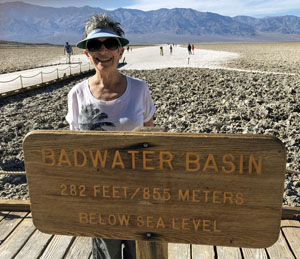
|
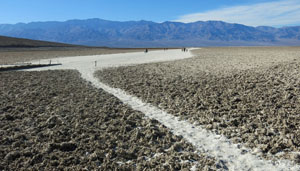
Badwater Basin
|
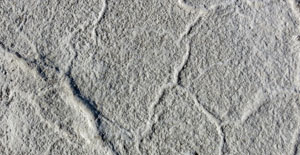
Saltscape at Badwater
|
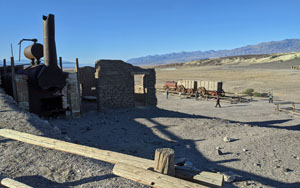
The Old Harmony Borax Works (closed 1888)
Mule Train in Distance
|
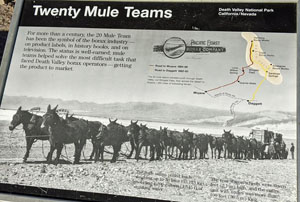
20-Mule Teams Hauled 36 tons of Borax...
|
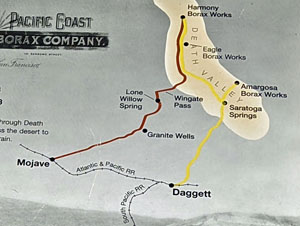
... out of Death Valley and over the Mohave
|
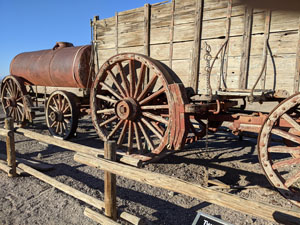
Part of a Mule Train
|
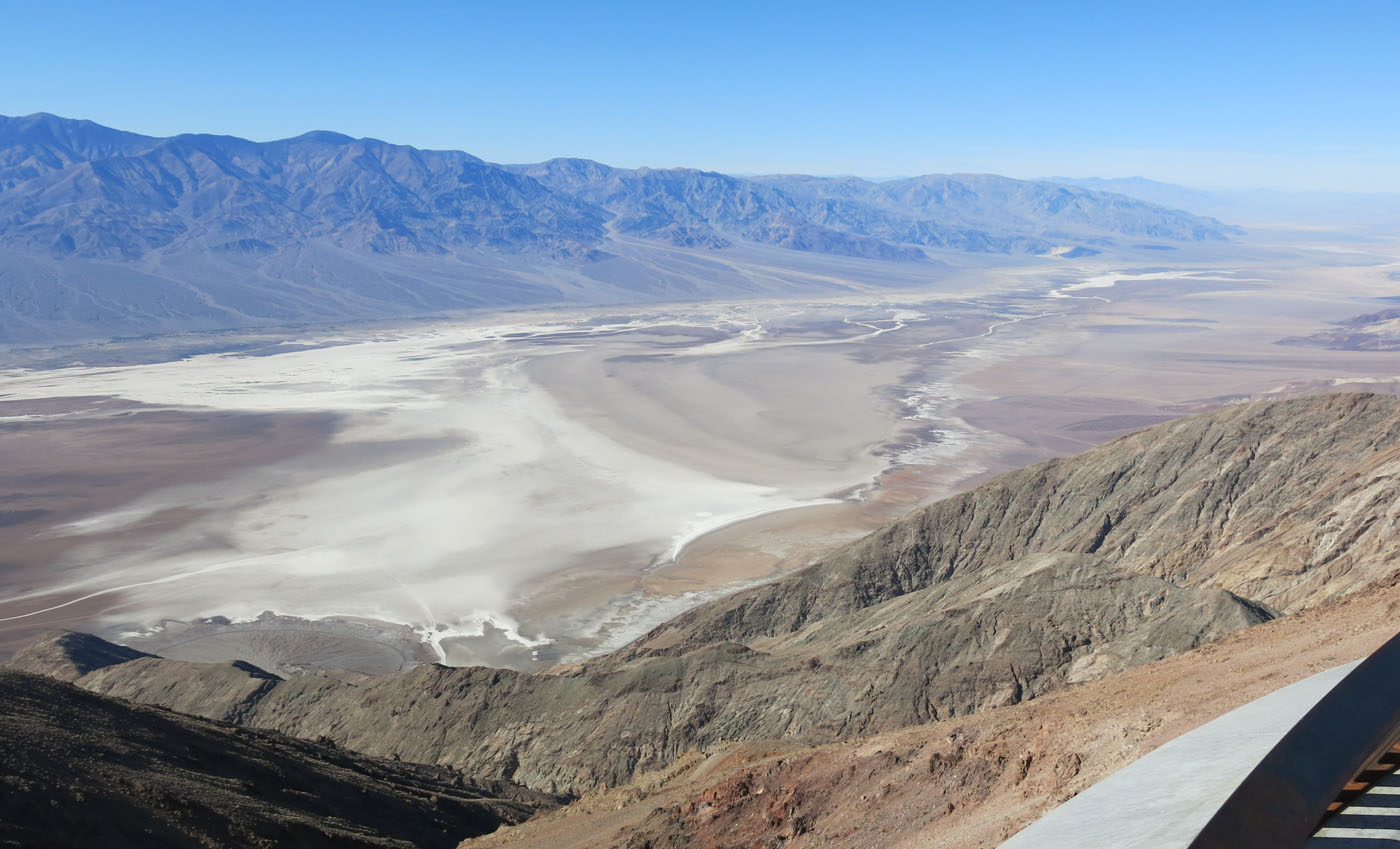
A Last Look at the Valley from Dante's View
The geology of Death Valley is way
beyond my small brain to comprehend but I do understand a
few things. The Amargosa River drains more territory than
New Hampshire but the river dies in Death Valley, never
reaching the sea. Flowing for hundreds of miles underground
it occasionally surfaces and sometimes floods. In Death
Valley it evaporates under the hot, dry conditions faster
than the river can replenish the lake. The salt, bauxite and
other minerals dry out upon the valley floor, as seen above.
It was not always so, the prehistoric Lake Manly once
covered the area to the depth of a hundred feet or more. The
ancient shores of Manly can still be seen on the slopes of
the Panamint range. In geologic terms, the topography is a
fast moving cement mixer of change. Valleys are sinking and
mountains are thrown up at an alarming geologic rate as the
Pacific and American tectonic plates grind and move against
each other far below the surface. Floods and frequent
earthquakes are the only manifestation of this drama that we
see in human time.
Overall, it was a great trip, spiritually liberating. As we
drove across some of the most spectacular scenery on the
planet I became convinced that the Earth is still bigger
than we are. Climate change, overpopulation, pandemics and
toxic governments will not destroy the Earth. SARS-Cov-2
is the Earth equivalent of our human immune system springing
into action against the assault we have perpetrated upon the
global biome. Humanity will no doubt suffer
and be reduced in the short term, but we will
survive in smaller, smarter numbers. The great experiment
will march on but only if we learn from the experience. If
not, we will go the way of the dinosaurs. Mass extinctions
are always hardest upon the largest, brainiest creatures.
When did you hear of extinct cockroaches? Meanwhile, I
am glad I am still here to appreciate the majesty of Death
Valley.

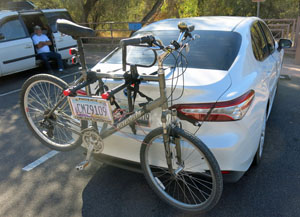 As autumn arrived
much later than usual and Barbara's 80th birthday loomed on the
horizon, what better than a jaunt to haunt Death Valley? We
hoped that the grim reaper would be away from his usual patch
and busy elsewhere, dealing with the second major wave of
Covid-19 sweeping the nation. So we tentatively ventured out
from our burrow, blinking in the sunlight, clutching packs of
masks, sanitizer and wipes. I strapped my bike to the back of
the car (right) and we headed northwest through Arizona, across
a corner of Nevada, over the vast expanse of the Mohave desert
in California and into the basin-and-range scenery surrounding
Death Valley. We avoided the direct route via Las Vegas and
stuck to a more scenic route, half an hour longer but well worth
the detour. 450 miles of stunning desert and mountain scenery,
very little traffic, a classic American road trip.
As autumn arrived
much later than usual and Barbara's 80th birthday loomed on the
horizon, what better than a jaunt to haunt Death Valley? We
hoped that the grim reaper would be away from his usual patch
and busy elsewhere, dealing with the second major wave of
Covid-19 sweeping the nation. So we tentatively ventured out
from our burrow, blinking in the sunlight, clutching packs of
masks, sanitizer and wipes. I strapped my bike to the back of
the car (right) and we headed northwest through Arizona, across
a corner of Nevada, over the vast expanse of the Mohave desert
in California and into the basin-and-range scenery surrounding
Death Valley. We avoided the direct route via Las Vegas and
stuck to a more scenic route, half an hour longer but well worth
the detour. 450 miles of stunning desert and mountain scenery,
very little traffic, a classic American road trip.